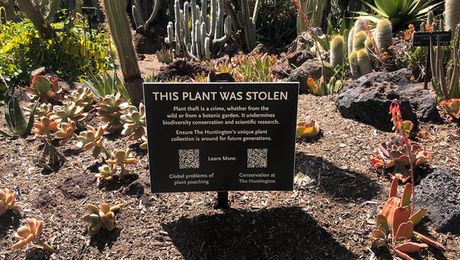
As garden centers start to open their doors for the season (and we get ready to run into them with open arms), we decided to ask some regional experts what plants are on the top of their shopping lists this year. These wish list plants are undoubtably beautiful, but many are also hardy, resistant to diseases and pests, long bloomers or more compact than other varieties. In other words, before you check out these four must-have plants for the Midwest, you’ll want to find some more space in your garden.
1. ‘Holy Smoke’ Big Bluestem

Name: Andropogon gerardii ‘Holy Smoke’
Zones: 4–9
Size: 5 feet tall and 2½ feet wide
Conditions: Full sun; average to dry, well-drained soil
Native range: Eastern and central United States, southeastern Canada, and northern Mexico
Big bluestems, once dominant across the midcontinental prairie landscape in height and numbers, have finally begun to make a big splash in gardens thanks to pioneering selections for color and height. Newcomers such as ‘Holy Smoke’ rise to a modest 5 feet, making them perfectly suited for planting alongside foundations or as architectural scrims within borders. ‘Holy Smoke’ spends the first half of summer as a fountain of grassy blades before rising to its ultimate size in late summer, rich with pink and purple tones. This is brand-new for 2021 and may take a few years to reach your favorite plant shops, so be patient in the hunt.
2. ‘Green Twister’ Coneflower

Name: Echinacea purpurea ‘Green Twister’
Zones: 3–8
Size: 24 to 36 inches tall and 18 inches wide
Conditions: Full sun to partial shade; well-drained soil
Native range: Central and southeastern United States
This recent seed strain introduction puts a chartreuse spin on the usual pink and mauve flowers of the familiar purple coneflower. With spooning, upturned rays, ‘Green Twister’ holds its color for weeks in midsummer and will yield ample seeds for the goldfinches and sparrows in autumn if you’ve left a few stems after raiding the patch for casual floral arrangements. Because ‘Green Twister’ is a seed strain, you don’t have to worry about off-types clouding your designs, as seedlings return true to type while gently roaming to fill gaps within the planting. You’ll find yourself coming back for more, given this plant’s durability across a range of soil types, including clay, and its drought tolerance once established.
3. Purple-Stemmed Aster

Name: Symphyotrichum puniceum
Zones: 3–9
Size: 2 to 5 feet tall and 3 feet wide
Conditions: Full sun; moist to wet soil
Native range: Eastern North America
The aster game is a race against the clock to see which one will still stand fresh through the first frost. While there are many choices, purple-stemmed aster deserves more attention, particularly given its preference for wet, heavy soil. It’s a perfect choice for a bioswale or next to a water garden. Once established, it tolerates seasonal drought and some deer browsing, which coincidentally keeps plants bushy and robust while preventing them from getting too tall and lanky. Regardless of how you grow it, you can count on an extended show of purple-and-blue-composite flowers throughout autumn, set handsomely against glossy foliage.
4. Gray Goldenrod

Name: Solidago nemoralis
Zones: 3–8
Size: 18 to 24 inches tall and 12 to 24 inches wide
Conditions: Full sun; average to dry, well-drained soil
Native range: United States east of the Rockies and southern Canada
If you don’t have space for the explosive proportions of ‘Fireworks’ (Solidago rugosa ‘Fireworks’, Zones 4–9), this shorter prairie goldenrod makes more sense. It’s fantastically versatile, thriving in dry, gravelly soil as well as it does in heavy clay. With wand-shaped inflorescences, gray goldenrod makes a charming addition to the autumn garden while serving up nectar and pollen to a wide array of bees, flies, butterflies, and moths. Deer won’t bother it either. In rich garden soil you can expect rambunctious growth. The stress of leaner situations will keep it in check; it’s a tough plant that’s perfect for a tough place.
Kelly D. Norris, the author of New Naturalism: Designing and Planting a Resilient, Ecologically Vibrant Home Garden, lives and gardens in Des Moines, Iowa.
Fine Gardening Recommended Products

Razor-Back Potato/Refuse Hook
Fine Gardening receives a commission for items purchased through links on this site, including Amazon Associates and other affiliate advertising programs.

Pruning Simplified: A Step-by-Step Guide to 50 Popular Trees and Shrubs
Fine Gardening receives a commission for items purchased through links on this site, including Amazon Associates and other affiliate advertising programs.

The Nature of Oaks: The Rich Ecology of Our Most Essential Native Trees
Fine Gardening receives a commission for items purchased through links on this site, including Amazon Associates and other affiliate advertising programs.


















Comments
Log in or create an account to post a comment.
Sign up Log in